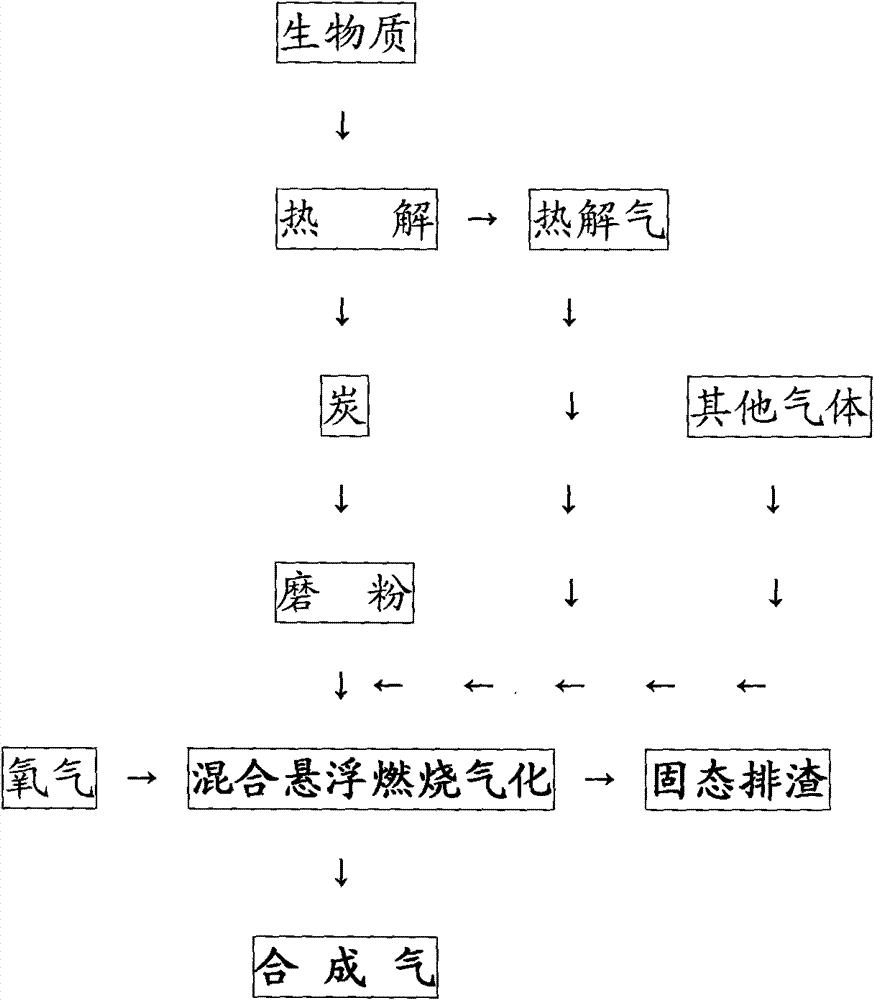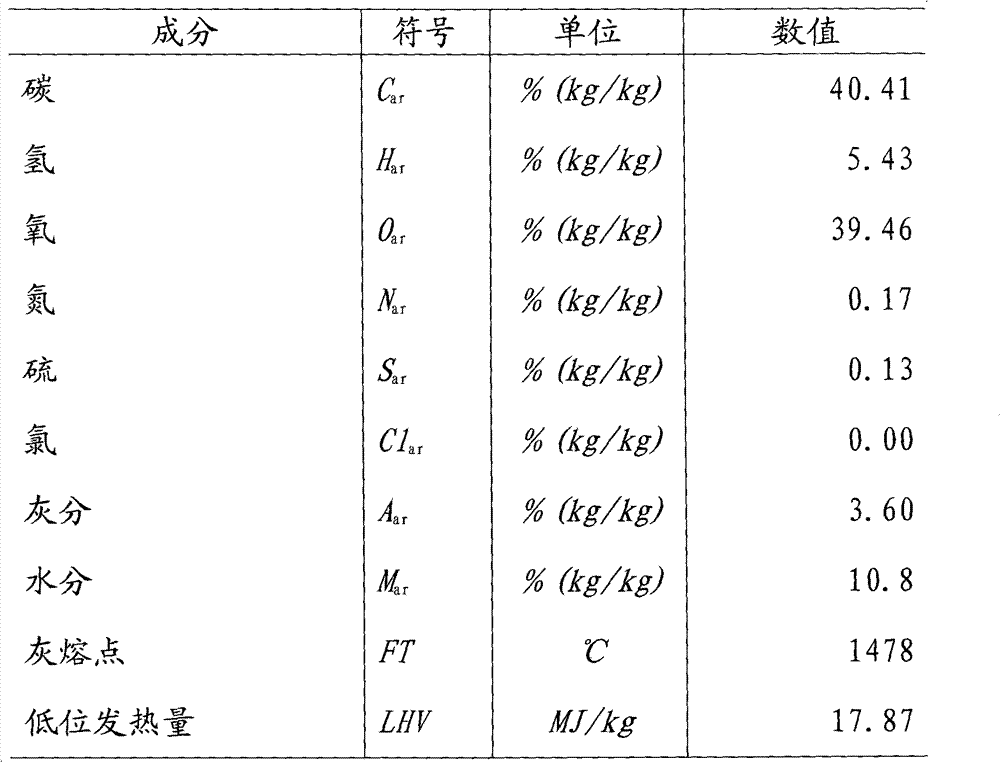Dry slagging high-temperature entrained flow gasification method
A technology of solid-state slag removal and high-temperature airflow, which is applied in the fields of thermochemistry of biomass, energy and chemical industry, can solve problems such as difficulties, low gasification efficiency, and carbon particles sticking to the wall, so as to achieve large selection of media, sufficient gasification reaction, The effect of reducing oxygen consumption
- Summary
- Abstract
- Description
- Claims
- Application Information
AI Technical Summary
Problems solved by technology
Method used
Image
Examples
specific Embodiment approach 2
[0041] Carry out implementation on the basis of the implementation of specific embodiment one, biomass raw material is an example with fuelwood Quercus sp., and the elemental analysis and characteristic data of Quercus sp. after drying are as shown in Table 1:
[0042] Table 1: Elemental analysis and characteristic data table of Quercus quercus after drying
[0043]
[0044] The main process operating conditions are set as follows:
[0045] ①. The import of biomass raw materials is 4.0kg / s, and the pyrolysis adopts the method of external heating of gas. The pyrolysis gas obtained after pyrolysis is 3.69kg / s, and the charcoal is 1.2kg / s.
[0046] ②. After the charcoal is made into carbon powder, the average particle size is 97 microns, and the maximum particle size is 200 microns. The charcoal powder is transported to the entrained bed by pyrolysis gas for gasification. The mixing temperature is 350°C, and the oxidant temperature is 150°C. Oxygen with a purity of 99.4%, the...
specific Embodiment approach 3
[0055] Still on the implementation basis of the specific embodiment one, carry out by the specific embodiment two, the biomass raw material used is still oak oak (still see Table 1 in the specific embodiment two), but the air-flow bed outlet temperature that adopts is 1250 ℃, the average particle size of the carbon powder is 140 microns, the maximum particle size is 250 microns, and other main process operating conditions are still the same as in the second embodiment.
[0056] The main process operating conditions are set as follows:
[0057] ①. The import of biomass raw materials is controlled at 4.0kg / s, and the pyrolysis adopts the method of external heating with gas. The pyrolysis gas after pyrolysis is 3.69kg / s, and the charcoal is 1.2kg / s.
[0058] ② After the charcoal is made into carbon powder, the average particle size is 140 microns, and the maximum particle size is 250 microns. The charcoal powder is gasified in the air-flow bed with pyrolysis gas, the mixing tempe...
specific Embodiment approach 4
[0067] Still on the implementation basis of specific embodiment one, carry out by specific embodiment two, the biomass raw material used is still Quercus sp. ℃, the average particle size of the carbon powder is 140 microns, the maximum particle size is 250 microns, and other main process operating conditions are still the same as in the second embodiment.
[0068] The main process operating conditions are set as follows:
[0069] ①. The import of biomass raw materials is controlled at 4.0kg / s, and the pyrolysis adopts the method of external heating with gas. The pyrolysis gas after pyrolysis is 3.69kg / s, and the charcoal is 1.2kg / s.
[0070] ②. After charcoal is made into carbon powder, the average particle size is 140 microns, and the maximum particle size is 250 microns. The charcoal powder is gasified by pyrolysis gas and transported to the gasifier. The mixing temperature is 350 ° C, and the oxidant temperature is 150 ° C, Oxygen with a purity of 99.4%, the amount of oxyg...
PUM
| Property | Measurement | Unit |
|---|---|---|
| particle size | aaaaa | aaaaa |
Abstract
Description
Claims
Application Information
 Login to View More
Login to View More - R&D
- Intellectual Property
- Life Sciences
- Materials
- Tech Scout
- Unparalleled Data Quality
- Higher Quality Content
- 60% Fewer Hallucinations
Browse by: Latest US Patents, China's latest patents, Technical Efficacy Thesaurus, Application Domain, Technology Topic, Popular Technical Reports.
© 2025 PatSnap. All rights reserved.Legal|Privacy policy|Modern Slavery Act Transparency Statement|Sitemap|About US| Contact US: help@patsnap.com


